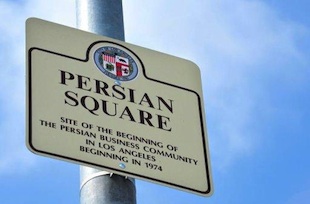By: Hyacinth Mascarenhas
Spreading through every sector of life, globalization has become more than its textbook definition. From economic and foreign policy to business moves and strategies, globalization has been stretching its arm across the globe since the beginning of trade.
But how far does globalization go in terms of breaking cultural barriers and morphing them together into a co-existing, thriving entity?
Millions of people around the world now take on second languages as a means to compete in the global market. Even more people try out different ethnic cuisines and customize it to fit their tastes and preferences. The most visible and noticeable venture of globalization, however, is seen in something as simple as a Starbucks cup in India.
As Starbucks finally opened its doors to the Indian population in October, the world waited for the stamp of approval from a nation best known for its tea drinkers. New York Times opinion writer Akash Kapur described it as “another brick…come down in the great wall separating India from the rest of the world.” In less than 50 years, the coffee chain that started out as a small coffee shop in Seattle has spread to more than 20,000 shops in around 60 countries. The former VP of Tata Coffee Limited, Harish Bijoor, called the new Starbucks store in Mumbai “the final stamp of globalization.”
Saks Fifth Avenue also made its way across the globe and opened its first store in Kazakhstan in September. Located in the Esentai Shopping Mall, the tri-level, approximate 91,000 square foot store ‘is congruent with the Saks Fifth Avenue stores in the United States in product and service, while catering to local tastes and preferences’, according to a press release.
In addition to stores and businesses introducing their brand to the world-wide market, globalization has also allowed for cultures to morph together in tight-knit communities around the world.
Take Tehrangeles, for example.
Also known as Little Persia, this central LA neighborhood is recognized by Google maps and stands as one of the largest community of Iranians outside of Iran.
Along Westwood Boulevard, this small neighborhood is lined with stores with signs in Farsi. Televisions within these stores beam Farsi-language channels and programs. The Ketab Bookstore features a variety of Persian books, music, and movies.
While the first Iranian immigrants came to LA in the 1960s to study in the US, many more fled the 1979 revolution that brought in the Islamic Republic after the overhaul of the Shah. Others arrived in the 1980s to escape the Iran-Iraq war. Despite skepticism and even backlash from Americans in the 1970s, this community now thrives as a safe haven for many Persians in need of a community that feels familiar and reflects their culture and values.
“They settled in LA because so much of it reminds them of Iran – the landscape, the car culture, the mountains,” said Dr. Reza Aslan of the University of California, Riverside in a BBC article.
Tehrangeles is just one of the many neighborhoods that ooze culture as a result of globalization, much like Chinatown, Japantown or even Little Italy.
Although varying in impact, globalization is a powerful, often unnoticed force in modern times. Whether it is the celebration of Halloween in Indonesia or the newest over-the-top venture of Dubai to create a monolithic version of the Taj Mahal and name it ‘Taj Arabia’, globalization is a powerful force and tool that can be applied to almost every sphere of life.
It is difficult to say whether it will be the greatest connecting force to bring the world closer together, or the nail in the coffin of cultural identity and tradition. Needless to say, despite the thriving business of travel, the internet and social networking that catalyze globalization, there will always be a soft spot for cultural diversity.
The fundamentally human need to be unique and different will always be a driving force for many aching to protect and cherish their cultural traditions. There will always be mom’s chai that is more familiar, homey and comforting than a skinny, tall Frappuccino.




















[…] The new cultures of globalization. November 14, 2012. […]